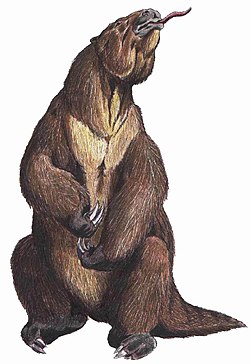| Analcitherium | |
|---|---|
| Scientific classification | |
| Kingdom: | Animalia |
| Phylum: | Chordata |
| Class: | Mammalia |
| Order: | Pilosa |
| Family: | † Scelidotheriidae |
| Genus: | † Analcitherium Ameghino, 1891 |
| Species: | †A. antarticum |
| Binomial name | |
| †Analcitherium antarticum Ameghino, 1891 | |
Analcitherium is an extinct genus of scelidotheriid sloth that lived during the Early Miocene in what is now Argentina. Fossils have been found in the Santa Cruz Formation of Argentina. [1]

